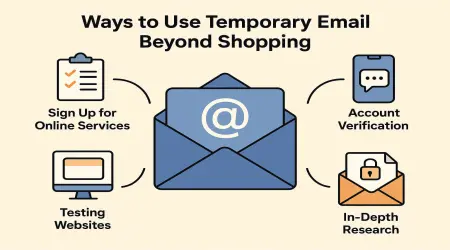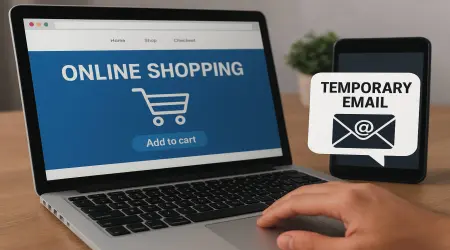

Temporary Email vs Gmail/Outlook: When Should You Use It?
One Inbox Doesn’t Fit All
We live in a world where emails do more than just send messages—they’re keys to your identity, digital footprint, and daily life. But should you use your personal Gmail or Outlook account for everything? Not necessarily. That’s where temporary emails step in. Whether you're signing up for a free trial, testing a platform, or protecting your privacy, choosing between a temporary email and a permanent account like Gmail or Outlook can make or break your digital security.
In this article, we’ll break down the differences, pros, and ideal use cases for both, so you’ll know exactly when to use which—especially in 2025 when online privacy is more crucial than ever.
What’s the Real Difference Between Temporary and Permanent Emails?
Let’s start with the basics. Here’s how temporary emails (like those from TemporaryMail.info) stack up against mainstream platforms like Gmail and Outlook:
| Feature | Temporary Email | Gmail/Outlook |
|---|---|---|
| Lifespan | Minutes to a few hours | Permanent (unless deleted) |
| Signup Required | ❌ No | ✅ Yes |
| Anonymity | 🔒 High | 🟡 Moderate |
| Email Sending | ❌ Receive Only | ✅ Send & Receive |
| Storage & History | 🗑️ Auto-deletes quickly | 🗂️ Long-term storage |
| Security Tools | Basic (or none) | Advanced (2FA, backup, etc.) |
When Should You Use a Temporary Email?
Temporary emails shine in situations where privacy, speed, and convenience are key. Here are ideal scenarios for using temp mail in 2025:
🔐 Sign-Up Without Sharing Personal Info
Want to access a gated PDF, join a webinar, or download a coupon without getting spammed? Use a disposable email.
🧪 Test Websites or Apps
If you're a developer, marketer, or QA tester, temp emails are perfect for checking registration flows or email notifications without cluttering your main inbox.
🎯 Avoid Spam and Phishing
Many shady platforms collect emails for future ad targeting or phishing campaigns. Temp mail keeps you one step ahead.
🎁 Join Giveaways & Trials
Sign up for free trials (Netflix, Canva, etc.) or contests without using your main account—no commitment, no follow-up spam.
When Should You Stick to Gmail or Outlook?
While temp emails are convenient, there are moments where you must rely on trusted providers like Gmail or Outlook:
🏦 Banking, Healthcare, and Legal Accounts
Never use a disposable address for sensitive or mission-critical accounts. Your real email ensures recovery options, two-factor authentication, and long-term access.
📥 Ongoing Conversations
Need to follow up on a customer support issue or collaborate via email? Permanent addresses offer full thread history, search, and contact syncing.
🔔 Notifications and Scheduling
Google and Microsoft services integrate calendars, cloud storage, and reminders. For productivity and planning, your real email is indispensable.
Privacy and Security: Which One Offers More Protection?
The answer depends on the situation:
Temporary Emails offer maximum anonymity—no names, no metadata, no trace. But they’re vulnerable to hijacking if someone else accesses the public inbox.
Gmail/Outlook offer enterprise-grade security with spam filters, phishing protection, and encryption—but at the cost of privacy. Google, for example, may use data to personalize ads.
💡 Pro Tip for 2025: For full protection, use temporary email + VPN + private browser (like Brave or Firefox with privacy add-ons).
How to Use Both Smartly in 2025
Think of temp mail and Gmail/Outlook as tools for different jobs. Here's how to balance both for a smart digital strategy:
✅ Use Temp Email For:
Signing up for freebies or whitepapers
Testing platforms or services
Creating anonymous accounts
Commenting on blogs or forums anonymously
✅ Use Gmail/Outlook For:
Personal and professional communication
Accessing banking or utility services
Storing valuable info and documents
Syncing contacts and devices
🛠️ Many professionals now maintain two-tiered email strategies: one personal (Gmail), one temp (disposable) for short-term tasks.
Conclusion: Know When to Switch and Why It Matters
Using your Gmail or Outlook account for everything online is like handing your house key to a stranger—it may work, but it’s not safe. Temporary emails empower you to browse, sign up, and experiment online without compromising your identity or getting buried in spam.
In 2025, the smartest internet users will:
Use temp mail for convenience and privacy
Use permanent emails for long-term trust and security
✅ Ready to protect your real inbox? Try TemporaryMail.info today—it's free, fast, and built for a safer internet.or read this articlesd For TemporaryMail




